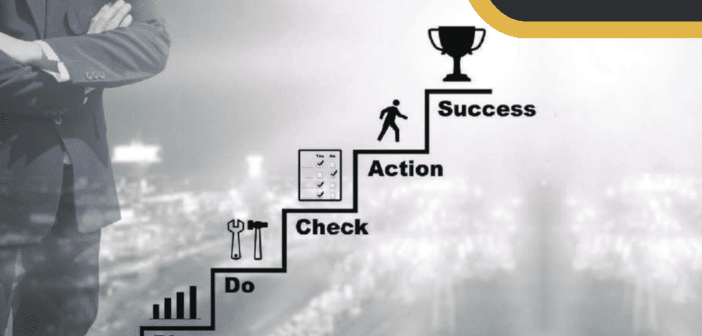By Derek Mutiso
A Winning Formula for Success in Business
The pursuit of organizational efficiency and operational excellence is an eternal quest for any company committed to staying in business and achieving sustained growth, year-on-year. It is paramount for such businesses to continuously evolve, adapt, and innovate to meet changing market demands, technological advancements, and customer expectations. A good way for any firm to position itself, not only to survive but to thrive in the marketplace, is by identifying and embracing a winning formula for success. The ‘winning formula’ isn’t static—it evolves, incorporating new methodologies and strategies that align with the company’s goals and the demands of the market.
Toyota Inc. has managed to consistently punch above its weight and stay on top of its game. For several years now, it has retained its position as the most profitable automaker in the world. Toyota is known for having relatively favourable labor-hours, and for the production of top-quality cars with fewer flaws than any rival manufacturer. Across its global factories, Toyota continuously sets new benchmarks in manufacturing, product innovation, and process refinement. It has managed to steadily grow its market share, despite competitive pricing from its rivals.
The Toyota Production System, also known as the lean manufacturing model, has become a novel case study for management professionals around the world. The hallmarks of lean management include:
• The concept of continuous improvement is a long-term approach to work that methodically looks to achieve small, incremental changes in processes to improve efficiency and quality.
• Producing value for the customer through resource optimization, and establishing a consistent workflow based on actual customer demands. By identifying each step in a business process and then modifying or removing steps that do not add value.
• It aims to eliminate any waste of time, effort, or money.
Central to the Toyota Production System are the following defining features;
Defining Value
Lean thinking at its core revolves around pinpointing value, focusing on creating enhanced value for customers while optimizing resources. The first step is to define and create true value for your customers. This involves constructing a streamlined value stream by identifying and eliminating wasteful activities from workflows. In the context of Lean, defining value centers on customer perception. Essentially, value equates to anything a customer is willing to pay for.
An important aspect is that customers perceive value in the entirety of a product rather than fragmented parts. For instance, buying a phone that comes without a charger results in the consumer taking on additional costs and inconvenience to make it functional. True Value lies in delivering a complete, usable product that meets your customers’ needs.
Identifying value-adding activities within processes becomes crucial. Such activities efficiently contribute to product progression, align with customer willingness to pay, and necessitate no rework. Conversely, non-value-adding activities hinder efficiency, resulting in wasted resources and customer disinterest.
The Lean philosophy identifies seven categories of waste that need to be avoided:
1. Transportation: Moving products unnecessary for processing.
2. Inventory: Encompassing components, work in progress, and finished products not being processed.
3. Motion: Excessive movement of people or equipment beyond what’s needed for processing.
4. Waiting: Delays in production while awaiting the next step.
5. Overproduction: Generating more than demanded.
6. Over-processing: Arising from inefficient tool or product design, leading to unnecessary activity.
7. Defects: Effort spent on inspecting and rectifying faults.
Kaizen- Continuous Improvement | Encouraging Staff Participation
Kaizen is a Japanese term that is a combination of two words –“kai” which means change, and “zen” which is good. The term is synonymous with “continuous improvement.” This approach mobilizes every individual within the company to take an active role in deciding how things are done within a company.
The idea here is to empower each employee not only to identify areas for efficiency but also to propose improvements openly. Once a potential solution is suggested, it undergoes analysis; if it proves to be beneficial, it gets integrated. This constant cycle of communication fosters staff engagement, and greatly boosts morale, and retention rates.
Source: https://www.bobstanke.com/kaizen
Fostering collaboration is integral—a core tenet of the lean management ethos. Regular departmental meetings serve as forums to review past challenges and commend employees who exceed expectations. Ultimately, this practice bolsters the cultural principles throughout the organization.
Kanban- Continuous Workflow
Kanban is a concept that was thought up by Taiichi Ohno, an industrial engineer at Toyota. It is an inventory control system used in manufacturing. The term “kanban” originates from Japanese, translating to “visual card.” As a system, kanban relies on visual cues to facilitate and maintain the flow of processes by using colors to signal necessary actions. The Kanban method is a strategy designed to reduce waste, downtime (work in progress), inefficiencies, and blockages within a workflow. It visually represents projects through boards, lists, and cards, delineating responsibilities across various departments.
Due to its focus on efficiency, Kanban leads to accelerated turnaround times. This means swifter manufacturing procedures, expedited packaging and handling, and more efficient delivery schedules for customers. Consequently, this minimizes company overheads, like storage costs, insurance, and the risk of obsolete inventory, while also enhancing capital turnover for more effective utilization.
Kanban boards serve as organizational tools within the kanban process, comprising three primary elements: boards, lists, and cards. Boards provide an overview of a process, often organized for different departments. Lists represent tasks within each board, such as stages in manufacturing. Cards, residing within lists, outline specific sequential action items needed to complete tasks, allowing for detailed process tracking. This setup fosters a visual representation of tasks, aiding in the clear flow of work within an organization’s workflow.
Source: Shopify
To ensure a clear visualization of workflows, processes are explicitly outlined. This enables departments to readily grasp the management’s expectations. It also allows department heads to allocate kanban cards to individuals. These cards distinctly define responsibilities for each task. Through precise policy definition, every worker comprehends their duties, the checklist criteria necessary for completion, and the procedures during step transitions.
Firms that adopt kanban gain improved foresight into upcoming scenarios. By outlining future steps and tasks, these companies potentially gain insight into potential risks, obstacles, or challenges that could otherwise impede progress. Consequently, they can proactively strategize to address these deficiencies and allocate resources to overcome hurdles before they disrupt operations.
Pursuit of Perfection
The principle of the “Pursuit of Perfection” in Lean methodology recognizes that absolute perfection is an ideal that cannot be entirely reached. However, it underscores the importance of continuously aiming for and improving toward that ideal state. This principle advocates setting high standards and ambitious goals for improvement within an organization. It involves challenging existing norms, processes, and methodologies, aiming to surpass current achievements. The emphasis lies in pushing beyond the status quo, constantly seeking innovative ways to enhance efficiency, quality, and effectiveness across all operational facets.
By instilling a culture that values ongoing advancement and excellence, the pursuit of perfection encourages teams to regularly evaluate and refine processes, workflows, and systems. It promotes a mindset that prioritizes continuous improvement and innovation as integral components of the organizational ethos.
While recognizing that absolute perfection may be unattainable, this principle encourages a relentless pursuit of excellence in every aspect of operations, fostering a culture of continuous learning, adaptation, and growth within the organization.
The fundamental lean principles operate in a continuous cycle. Some management guides list three, some five, and some even list seven but these are the core tenets of the strategy. In practice, lean teams diligently evaluate each process, seeking enhancements in value such as reduced cost, time, or resource utilization.
Their focus remains on amplifying value-contributing elements while eliminating non-value-adding components, ensuring a streamlined flow aligned with customer needs. While acknowledging the unattainability of absolute perfection, business professionals who’ve adopted the lean strategy must remember to conduct regular evaluations by asking themselves: Have we successfully executed our plan and realized efficiency gains? Where can we further refine our approach to enhance customer value? Their aim lies in its continual pursuit—a philosophy encapsulated by continuous improvement.
The author is a business writer and project coordinator, Omeriye Foundation




